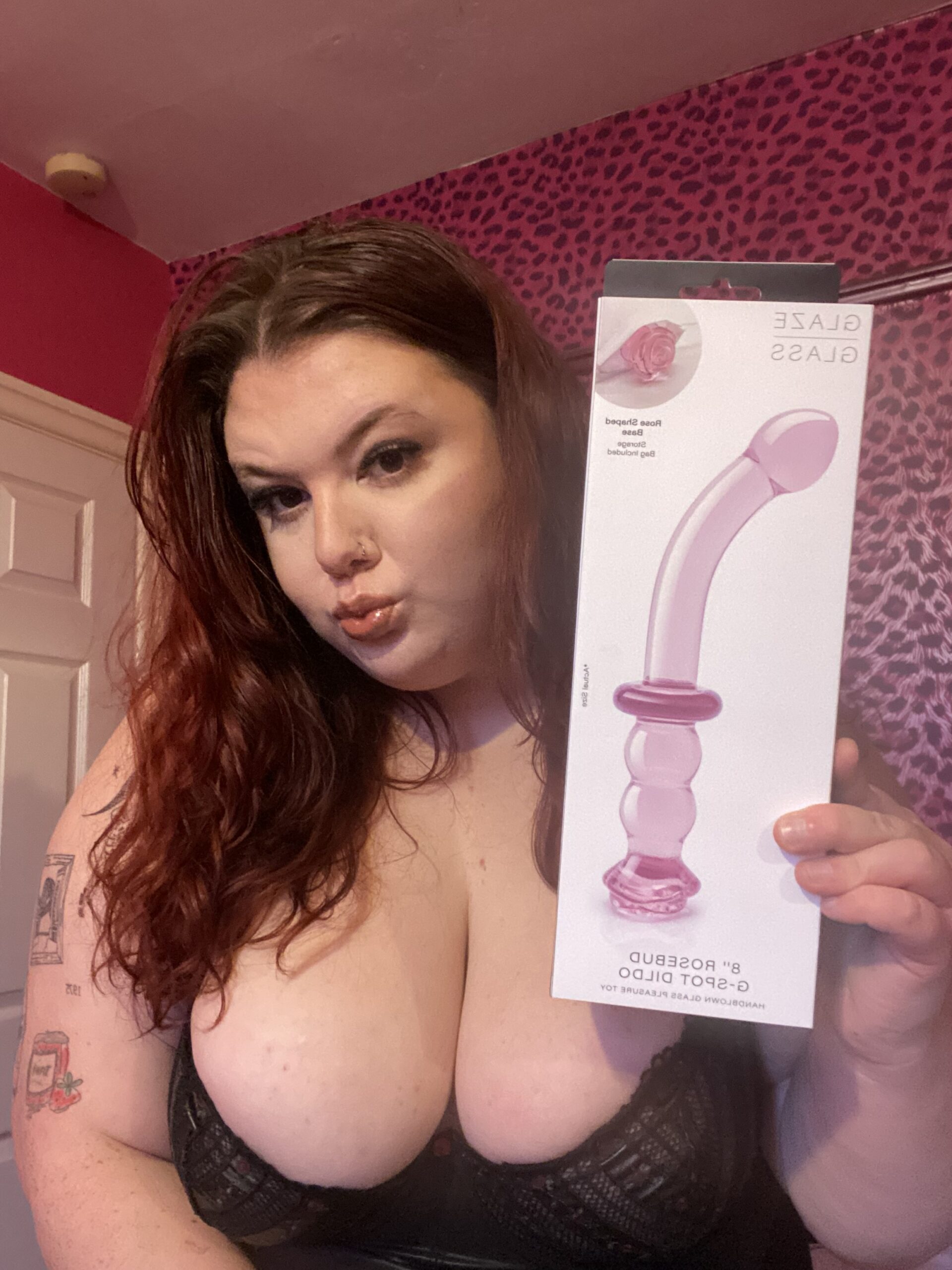Understanding the Complexity of Genderless Attraction
Gender has long been a cornerstone of social and cultural norms, influencing our perceptions of relationships, intimacy, and attraction. However, within the diverse landscape of the LGBTQIA+ community, there exists a complex web of identities and experiences that challenge traditional notions of gender and attraction.
Defining Genderless Attraction
Genderless attraction refers to an individual’s romantic, emotional, or physical connection with someone without being tied to societal expectations of gender roles or categories. This can manifest in various ways, including but not limited to: a deep connection with someone regardless of their biological sex, non-binary identity, or any other aspect of their presentation. It is essential to note that genderless attraction does not imply an absence of attraction towards one’s own sex, nor does it erase the experiences and identities within the LGBTQIA+ community.
A nuanced understanding of genderless attraction requires recognizing its relationship with fluidity, spectrum-ness, and the many shades in between. This can sometimes be confused or conflated with the concept of asexuality (lack of sexual interest) but is distinct as it involves a strong emotional, intellectual connection regardless of physical intimacy. This does not mean that individuals experiencing genderless attraction are devoid of desire altogether; rather, their desires may extend beyond specific physical attributes to encompass a range of aspects and emotions.
Another critical aspect lies in acknowledging that people can identify with or express different identities within the LGBTQIA+ spectrum simultaneously or at various stages in life. For instance, someone might identify as non-binary yet still experience genderless attraction towards individuals who do not conform strictly to binary norms. This intersectionality is vital for a comprehensive exploration of this phenomenon, highlighting both the shared human connections that transcend traditional notions of sex and gender.
Genderless attraction refers to an emotional, romantic, or physical connection that transcends traditional notions of gender identity and expression.
Genderless attraction is a concept that has gained significant attention in recent years, particularly within the LGBTQIA+ community. As society continues to evolve and our understanding of human experiences expands, it’s essential to explore and acknowledge this complex phenomenon.
Genderless attraction refers to an emotional, romantic, or physical connection that transcends traditional notions of gender identity and expression. This can encompass a range of relationships, from friendships and familial bonds to intimate partnerships and romantic connections.
One of the primary challenges in understanding genderless attraction is its fluidity. Unlike traditional binary notions of attraction, which often rely on assigning labels such as “straight” or “gay,” genderless attraction operates outside these confines. Individuals who experience genderless attraction may find themselves drawn to people of all genders, or they may identify as a non-binary or queer person themselves.
Moreover, genderless attraction can manifest in various ways, including platonic, romantic, and erotic connections. This highlights the importance of nuance when discussing this topic, as each individual’s experience is unique and multifaceted.
It’s also essential to recognize that genderless attraction is not a replacement for traditional sexual orientation or identity but rather an additional aspect of human experience. By acknowledging and understanding genderless attraction, we can foster greater inclusivity, acceptance, and empathy within our communities.
The Intersectionality of Genderless Attraction with LGBTQIA+ Identities
The exploration of genderless attraction is an intricate and multifaceted aspect of LGBTQIA+ identities, intersecting with various forms of oppression and marginalization to create complex power dynamics.
Non-Monosexual and Non-Binary Identities
The intersectionality of genderless attraction with LGBTQIA+ identities, non-monosexual and non-binary identities is a complex and multifaceted topic that highlights the diversity and richness of human experience. Traditionally, discussions around attraction have been centered on binary notions of masculinity and femininity, with little attention paid to individuals who do not conform to these norms.
Non-monosexual attractions, such as polyamory or pansexuality, challenge traditional notions of romantic love and relationships. These identities often coexist with non-binary or genderqueer identities, which blur the lines between traditionally defined male and female categories. The overlap between these various identities raises important questions about how we categorize and understand attraction.
One key concept that arises from this intersectionality is the idea of “sex-positive” discourse. This approach prioritizes pleasure, consent, and individual autonomy in all aspects of sex and relationships, regardless of gender or orientation. By centering the experiences and desires of LGBTQIA+ individuals, particularly those with non-monosexual or non-binary identities, we can work towards a more inclusive and equitable understanding of attraction.
The intersectionality of genderless attraction also highlights the importance of considering power dynamics and privilege. For example, how do cisgender, monosexual individuals navigate spaces where they are outnumbered by LGBTQIA+ individuals with non-monosexual or non-binary identities? How can we address issues of erasure and invisibility that may arise when these groups intersect?
Ultimately, the exploration of genderless attraction in the context of LGBTQIA+ discussions requires a nuanced understanding of the complex intersections between identity, power, and desire. By centering the voices and experiences of individuals with diverse attractions, we can work towards a more inclusive and compassionate society that values and respects all forms of human connection.
Exploring the nuances of non-monosexual and non-binary identities within the context of genderless attraction.
The exploration of genderless attraction within the context of LGBTQIA+ identities has become increasingly relevant, as the boundaries between traditional notions of sex, gender, and attraction continue to blur. Non-monosexual and non-binary identities, which have long been marginalized or erased from mainstream discourse, are now being recognized as legitimate expressions of human experience.
At its core, genderless attraction refers to a person’s emotional, physical, or romantic connection with others that transcends traditional notions of sex and gender. This can manifest in various ways, including but not limited to: aromanticism (the absence of romantic feelings), asexuality (the lack of sexual desire), and non-binary or queer attraction, which may involve a fluid or neutral sense of identity.

The intersectionality of genderless attraction with LGBTQIA+ identities highlights the importance of considering multiple facets of identity when discussing attraction and desire. Non-monosexual and non-binary individuals often face unique challenges in navigating societal expectations and norms surrounding sex, gender, and relationships.

For instance, a person who identifies as asexual may still experience emotional intimacy or attachment with others, but not necessarily through a traditional romantic or sexual relationship. Similarly, someone who identifies as non-binary or queer may engage in consensual same-sex encounters without identifying as gay or straight. This complex landscape underscores the need for inclusive language and understanding within LGBTQIA+ communities.
Moreover, the exploration of genderless attraction raises questions about the role of privilege and marginalization within these identities. Individuals who identify as non-monosexual or non-binary may experience varying degrees of privilege, depending on factors like their racial background, socioeconomic status, and access to resources and support.
To create a more nuanced understanding of genderless attraction in LGBTQIA+ contexts, it is essential to center the voices and experiences of individuals who have historically been marginalized or erased. By doing so, we can work towards a more inclusive and expansive definition of human connection and desire, one that recognizes the full spectrum of LGBTQIA+ identities and expressions.
The Impact of Social Norms on Perceptions of Genderless Attraction
The concept of genderless attraction has long been a subject of fascination and debate within the LGBTQIA+ community, particularly in discussions surrounding non-binary identities and queer relationships. As societal attitudes towards gender become increasingly fluid, individuals are embracing their true selves without adhering to traditional binary norms. However, despite this progress, social norms and cultural expectations continue to influence how we perceive and express attractions that defy traditional notions of masculinity and femininity.
Societal Pressures and Internalized Oppression
Genderless attraction, also known as genderqueer or non-gendered attraction, refers to the experience of being romantically and/or sexually attracted to individuals whose gender identity or expression does not conform to traditional notions of male or female.
Social norms play a significant role in shaping perceptions of genderless attraction. In many societies, gender is viewed as a binary concept, with strict definitions and expectations surrounding what it means to be masculine or feminine. As a result, individuals who do not fit into these categories may face rejection, marginalization, or even violence. However, the growing visibility of LGBTQIA+ individuals and the increasing awareness of non-binary identities have led to a shift in societal attitudes towards genderless attraction.
Societal pressures can also impact an individual’s experience of genderless attraction. For example, family members, peers, or romantic partners may struggle to understand or accept a non-traditional attraction, leading to feelings of guilt, shame, or isolation. Furthermore, the media often perpetuates traditional notions of masculinity and femininity, reinforcing negative stereotypes about non-binary individuals.
Internalized oppression is another significant factor affecting perceptions of genderless attraction. This refers to the process by which marginalized groups internalize the negative attitudes and biases they face from society, leading to self-doubt, anxiety, or depression. For instance, an individual who experiences same-sex attraction may struggle with feelings of shame or inadequacy due to societal pressures.
It is essential to recognize that genderless attraction is not a phase or a choice; it is a legitimate aspect of human diversity and a fundamental part of the LGBTQIA+ experience. By promoting understanding, acceptance, and inclusion, we can work towards creating a more supportive environment for individuals who identify as non-binary, genderqueer, or otherwise.
How societal expectations and internalized oppression shape individuals’ experiences with genderless attraction within the LGBTQIA+ community.
Societal norms and expectations play a profound role in shaping individuals’ perceptions of genderless attraction within the LGBTQIA+ community. The concept of genderless attraction, where an individual experiences romantic or sexual attraction without being bound by traditional binary notions of masculinity or femininity, can be met with both curiosity and resistance from society at large.
Internalized oppression, which refers to the process by which individuals absorb and internalize societal norms and expectations, particularly those that are oppressive, can significantly impact an individual’s experience of genderless attraction. Those who identify as non-binary, genderqueer, or agender may face unique challenges in expressing their attractions within the existing social framework.
The impact of societal expectations on individuals’ experiences with genderless attraction is multifaceted. On one hand, a lack of representation and visibility can lead to feelings of isolation and marginalization, as individuals struggle to find others who share similar experiences and emotions. This can result in internalized shame, self-doubt, and a sense of disconnection from their own desires.
On the other hand, societal expectations around gender norms can also create opportunities for individuals to explore and express their attractions in non-traditional ways. For example, the growing visibility of non-binary and trans individuals in mainstream media and culture has helped to normalize expressions of genderless attraction, allowing others to feel more comfortable expressing themselves in similar ways.
Moreover, the LGBTQIA+ community’s emphasis on intersectionality and inclusivity can provide a safe space for individuals to explore their attractions without fear of judgment or rejection. However, this can also create new challenges, as individuals may struggle to navigate complex webs of identity politics and competing interests within the community.
In conclusion, societal norms and internalized oppression have a profound impact on individuals’ experiences with genderless attraction within the LGBTQIA+ community. While there are certainly benefits to growing visibility and representation, it is essential to acknowledge the complexities and challenges that arise from these interactions, and to strive for greater understanding and acceptance throughout.
The Importance of Safe Spaces for Exploring Genderless Attraction
The concept of genderless attraction is increasingly being explored within the LGBTQIA+ community, shedding light on the diverse and complex experiences of individuals who don’t identify strictly along traditional binary lines. As discussions around identity, expression, and attraction continue to evolve, the importance of safe spaces for exploring these nuances cannot be overstated.
The Need for Inclusive Environments
Exploring genderless attraction is an integral part of understanding and embracing the diversity within the LGBTQIA+ community. Safe spaces for individuals to discover and express their non-traditional gender identities and attractions are crucial for promoting mental health, self-acceptance, and a sense of belonging.
Unfortunately, traditional social norms and environments often fail to accommodate those who identify outside the binary understanding of male and female. As a result, many individuals with genderless attractions feel forced to hide their true selves, leading to feelings of isolation, anxiety, and even depression.
- Adequate safe spaces allow individuals to express themselves freely without fear of judgment or rejection, fostering an environment conducive to growth and exploration.
- Moreover, inclusive environments with accessible language and resources empower individuals to better understand their identities, seek support from like-minded communities, and engage in meaningful conversations about their experiences.
The lack of representation and understanding around genderless attraction can lead to marginalization and erasure. It is essential for LGBTQIA+ organizations, allies, and community leaders to prioritize the creation and maintenance of inclusive spaces that cater to diverse needs and identities.
Creating safe and inclusive spaces for individuals to explore their genderless attractions without fear of judgment or rejection.

The concept of genderless attraction has been increasingly discussed within the LGBTQIA+ community, yet it remains a sensitive and often stigmatized topic. This can be attributed to societal norms that emphasize binary definitions of masculinity and femininity, making it challenging for individuals who do not identify with traditional gender roles. However, creating safe spaces for those exploring genderless attraction is crucial in fostering an environment where everyone feels comfortable expressing their true selves.
Safe spaces are essential in providing a supportive environment where individuals can explore their attractions without fear of judgment or rejection. This includes physical spaces such as community centers, online forums, and support groups, as well as psychological and therapeutic settings. Such environments allow individuals to feel safe from external pressures and judgments, enabling them to explore their feelings and desires without anxiety or stress.
Moreover, creating inclusive spaces that cater to diverse experiences is vital in promoting understanding and acceptance. This includes recognizing the complexities of gender identity and attraction, acknowledging that everyone’s experience is unique, and providing resources and support tailored to individual needs. By fostering a culture of empathy and compassion, safe spaces can serve as catalysts for personal growth, self-discovery, and healing.
It is also crucial to address power dynamics within these spaces, ensuring that marginalized individuals are given a platform to express themselves without fear of erasure or marginalization. This involves actively listening to and amplifying the voices of those who have been historically excluded from mainstream discussions around gender and attraction.
In conclusion, creating safe spaces for exploring genderless attraction is not only a moral imperative but also a necessary step towards promoting inclusivity and understanding within the LGBTQIA+ community. By providing supportive environments that acknowledge and respect individual differences, we can foster a culture of acceptance, empathy, and compassion that allows everyone to thrive.
Fostering Education and Understanding through Discourse
Genderless attraction, also known as agender or non-binary attraction, refers to a type of romantic and/or sexual attraction that does not identify with any particular gender. This can manifest in different ways, such as being drawn to individuals who do not conform to traditional notions of masculinity or femininity, or feeling an attraction to people without any specific gendered characteristics. In the context of LGBTQIA+ discussions, exploring genderless attraction is essential for promoting education and understanding about non-binary identities and experiences.
Critical Examination of Traditional Notions of Gender
The notion of gender has been deeply ingrained in our societal norms and language, often influencing the way we think about attraction and relationships. However, traditional notions of gender can be limiting when it comes to understanding non-heteronormative and non-cisnormative identities.
Discourse analysis reveals that the language we use to describe attraction is often rooted in binary notions of male and female, with little consideration for the complexities of queer experience. By examining traditional concepts of gender, we can gain a deeper understanding of how they intersect with attraction and identity, particularly in the context of LGBTQIA+ communities.
One way to foster education and understanding through discourse is to challenge traditional notions of gender in language. This involves using inclusive terminology and avoiding binary descriptions that erase or marginalize non-normative identities. For example, instead of referring to a person with both male and female traits as “confused” or “uncertain,” we can use terms like “non-binary” or “genderqueer.”
Critical examination of traditional notions of gender also requires an exploration of the social and cultural contexts in which they emerge. For instance, how do societal norms around masculinity and femininity shape our understanding of attraction and relationships? How do power dynamics, such as those based on race, class, and ability, intersect with gender to create new forms of marginalization?
By critically examining traditional notions of gender, we can develop a more nuanced understanding of the complexities of attraction in LGBTQIA+ discussions. This requires a willingness to challenge our own assumptions and biases, as well as engaging with diverse perspectives and experiences.
Discussing the limitations of traditional notions of gender in understanding and promoting genderless attraction within the LGBTQIA+ community.
The notion of gender has long been intertwined with societal expectations and norms, often influencing our understanding of attraction and relationships within the LGBTQIA+ community. However, traditional notions of gender can be limiting in promoting genderless attraction, as they tend to focus on binary concepts of male and female identities.
Traditional discourses on gender often rely on a heteronormative framework, assuming that individuals are either male or female and that their attractions are based on these biological characteristics. This approach neglects the diversity of human experiences and ignores the complexities of non-binary and fluid identities within the LGBTQIA+ community. As a result, it can be challenging to promote genderless attraction and understanding within this context.
A more inclusive and nuanced approach is needed, one that recognizes the many ways in which individuals experience and express their attractions beyond traditional notions of male-female dichotomies. This requires a shift towards a more fluid and flexible understanding of gender, one that acknowledges the diversity of human experiences and promotes a culture of acceptance and empathy.
By fostering education and understanding through discourse, we can work to challenge traditional notions of gender and promote a more inclusive and accepting environment for individuals of all orientations. This involves listening to the stories and experiences of LGBTQIA+ individuals, acknowledging their validity, and creating spaces where they feel safe to express themselves freely.
In this way, we can begin to break down the barriers that prevent individuals from embracing their true attractions and identities, and work towards a society where genderless attraction is celebrated as a normal and natural part of human experience.
Challenges and Opportunities in Representing Genderless Attraction in Media and Culture
Genderless attraction, often referred to as non-binary or pansexual attraction, has been a topic of interest and exploration within the LGBTQIA+ community. As media and culture continue to evolve, there are both challenges and opportunities present when representing genderless attraction in these spaces.
The Representation Gap
Genderless attraction, also known as non-binary or pansexual attraction, has been a topic of growing interest and debate within the LGBTQIA+ community. However, despite its increasing visibility, genderless attraction still faces significant challenges in being represented accurately and inclusively in media and culture.
One major challenge is the linguistic limitations of English, which often relies on binary terms to describe gender identity. This can lead to a lack of precision and nuance in communication, causing misunderstandings and misrepresentations of genderless attraction. For instance, using terms like “agender” or “genderqueer” without proper context or explanation can be alienating and invalidating for individuals who identify outside these binary categories.
Another opportunity for representation lies in the rise of non-binary and LGBTQIA+-inclusive language, such as the use of they/them pronouns and gender-neutral vocabulary. However, this progress is often slow to trickle down to mainstream media and popular culture, leaving many individuals feeling invisible or marginalized.
The representation gap in media and culture also extends to the portrayal of relationships and intimacy. Genderless attraction is often relegated to secondary or tertiary roles, with characters being depicted as straight or cisgender by default. This reinforces damaging stereotypes and erases the experiences of individuals who do not conform to traditional notions of romance and relationships.
Moreover, the LGBTQIA+ community has faced historical and systemic marginalization, leading to a lack of representation in media and culture. The absence of diverse and inclusive storytelling can perpetuate negative attitudes and contribute to the erasure of marginalized groups.
Fortunately, there are opportunities for growth and improvement. Increased representation of genderless attraction in media and culture can help to promote understanding and acceptance. Moreover, the rise of online communities and social media has created spaces for individuals to connect with one another and share their experiences, promoting a more nuanced and inclusive discourse.
Ultimately, addressing the challenges and opportunities in representing genderless attraction requires a multifaceted approach that involves linguistic innovation, cultural exchange, and community engagement. By working together to create more inclusive and representative media and culture, we can foster a more welcoming and accepting environment for individuals of all genders and orientations.
Analyzing the lack of representation of genderless attractions in media and culture, and its implications for individuals within the LGBTQIA+ community.
The media and culture often struggle to represent genderless attractions, leaving individuals within the LGBTQIA+ community feeling marginalized and invisible. This lack of representation has severe implications for those who identify as non-binary, genderqueer, or have fluid sexual orientations.
One of the primary challenges is the binary lens through which media often views attraction and relationships. The traditional notion of romantic love is typically paired with specific gender expectations, leaving little space for individuals who don’t identify with a particular sex or gender. This can lead to feelings of exclusion and erasure for those who don’t conform to societal norms.
Another challenge lies in the way media represents genderless attraction. When it does occur, it is often done so in a tokenistic manner, with characters being relegated to the sidelines or serving as plot devices rather than fully fleshed-out individuals. This can perpetuate negative stereotypes and reinforce the idea that genderless attraction is somehow unusual or exotic.
Furthermore, the absence of representation in media and culture has significant implications for mental health within the LGBTQIA+ community. A lack of visibility and understanding can lead to feelings of isolation, self-doubt, and anxiety among individuals who are already struggling to find their place within society. It can also perpetuate negative attitudes towards non-binary identities, making it more difficult for people to come out and seek support.
However, there are opportunities for growth and change. The rise of streaming platforms, social media, and online communities has created new spaces for LGBTQIA+ individuals to express themselves and find connection with others who share similar experiences. This increased visibility can help challenge traditional notions of attraction and relationships, paving the way for more inclusive and nuanced representations in the future.
Moreover, there is a growing trend towards greater inclusivity and diversity within media and culture. Shows like “Sense8,” “Transparent,” and “The Fosters” have begun to feature characters who identify as non-binary or queer, offering a glimmer of hope for more authentic representations in the future.
Ultimately, exploring genderless attraction in LGBTQIA+ discussions requires a commitment to inclusivity and representation. By creating spaces for marginalized voices to be heard and seen, we can work towards a more accepting and compassionate society that values diversity in all its forms.
Buy Lubido lubricants for lasting and smooth sensations at Peaches and Screams Shop Fleshlight range for the ultimate experience at Peaches and Screams Buy PVC orgy bedding at Peaches and Screams Explore Rouge Garments lingerie for sexy and seductive styles at Peaches and Screams Buy Liquid Silk for silky-smooth lubrication at Peaches and Screams Explore butterfly vibrators and vibrating knickers for hands-free excitement at Peaches and Screams
Apples and Pears Co. Hopeless Book Melissa J Design Gifted Brits Highland Spring Magazine
- New Patient Treatment Near Headley, Surrey - December 26, 2024
- Exploring Genderless Attraction In LGBTQIA+ Discussions - December 14, 2024
